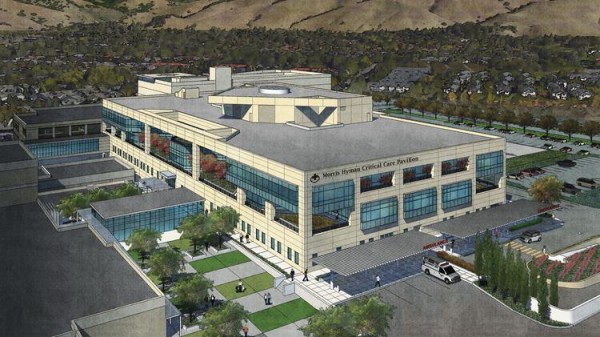
LARGE MULTIFAMILY IN BAY AREA – 1/25
LARGE MULTIFAMILY IN BAY AREA – 1/25
Bay Area Crane Watch: Bay Meadows and 4 other big projects changing the region’s skyline

The Bay Area is dotted with cranes working on development projects that include multifamily housing, office towers, rebuilt hospitals, state-of-the-art factories and more. These projects have a major economic impact on our region: the largest construction projects in the Bay Area cost a combined $22 billion. Cranewatch is a regular feature we’re starting in the San Francisco Business Times to give readers insight into construction projects that are changing our skylines.
Bay Meadows Station 4
Address: 3050 S. Delaware St., San Mateo
Description: 7-level office building, with 210,000-square-foot leasable office space, and 5,000 square feet of retail
Cost:$61 million
Developer: Wilson Meany
Contractor: Webcor Builders
Architect: HOK
Estimated Completion: June 2016
Bay Meadows, the former racetrack turned mixed-used community in San Mateo, had a big year in 2015. Apartments and parks opened and ground was broken on two office projects. In October, Wilson Meany started building Bay Meadows Station 4, where SurveyMonkey will move its headquarters. In November, Wilson Meany broke ground on the Station 3 office project.
All structural concrete is poured and more than half of the exterior curtain wall systems are up at Station 4. Jansen Tredway, senior project manager at Webcor Builders, said that despite weather delays, so far “it’s one of the best jobs I’ve been involved with” becaue of how smooth it has gone. The whole development, he said, will bring an urban environment to a suburban area. When the 83-acre project is finished around 2020, it will include 1,100 units of housing, 750,000 square feet of office space and 18 acres of parks.
L Seven
Address: 350 8th St., San Francisco
Description: 410 apartments in a 7-building mixed-use development with 40,000 square feet of retail and office space
Cost:$140.02 million
Developer/Owner: 4Terra Investments / AERC 8th & Harrison
Contractor: James E. Roberts – Obayashi Corp.
Architect: Kava Massih Architects
Estimated Completion: Spring 2016
The massive 350 8th St. in SoMa takes up an entire city block encompassing 3.36 acres at the corner of 8th and Harrison streets. It’s not surprising then that the site shares the same struggle as many large projects in the Bay Area: labor shortages. Scott Smith, president of James E. Roberts – Obayashi Corp., explained that the project is falling behind schedule due to a shortfall of carpentry and elevator sub-contractors. However, Smith said that units will be turned over this spring.
“The struggle nowadays is that everyone is at their limits; we’re all competing for the same talent out in the market,” he said. “There are only so many elevator companies out there.”
1201 Tennessee
Address: 1201 Tennessee St., San Francisco
Description: 229 market-rate units, 34 affordable units for families earning 55 percent of the area median income, as well as 2,000 square feet of retail
Cost:$80 million
Developer: AGI Avant
Contractor: Devcon Construction Inc.
Architect: Fougeron Architecture
Estimated Completion: Q3 2016
By this summer, the fast-growing Dogpatch neighborhood will be getting 263 new apartments at 1201 Tennessee St. The six-story building is targeting USCF Mission Bay employees, as well as commuters looking for access to the Muni T line. Jesse Herzog, chief investment officer at developer AGI Avant, said the project is significant because it was built without displacing any residents and will offer 34 on-site affordable units. “What (it) represents is that housing can be built with unanimous neighborhood and city buy-in,” he said.
Currently, the first floor podium deck is being poured. Once the podium framing is finished, it’s “full steam ahead on the other five stories,” Herzog said
Morris Hyman Critical Care Pavilion
Address: 2000 Mowry Ave., Fremont
Description: 240,000-square-foot hospital with 116 new beds
Cost:$220 million
Developer: Washington Hospital Healthcare System
Contractor: Rudolph and Sletten
Architect: Ratcliff
Estimated Completion: Fall 2018
Morris Hyman Critical Care Pavilion is shaping up to be a major lifesaver in southern Alameda County. It will double the hospital’s current critical care capacity — and quadruple the size of the its emergency room, one of the busiest in the county. The public project broke ground in February and is named after the founder of Fremont Bank, which donated to the rebuild. As with all healthcare projects, contractor Rudolph and Sletten must be extra careful to ensure it complies with the state’s occupational safety standards, such as hallway and room dimensions. The building will have a foundation that allows the building to move with an earthquake.
“Our teams work really closely with inspectors to make sure building is in compliance, and that building continues without delay,” said Anna Fowler of Rudolph and Sletten.
Gillig Manufacturing
Address: 450 Discovery Drive, Livermore
Description: Three building bus manufacturing facility
Cost:$73.32 million
Developer: ARKAY Properties
Contractor: Big-D Pacific
Architect: Ware Malcomb
Estimated Completion: Q4 2016
Gillig is known as the last fully-owned and -made bus manufacturer in the U.S. It makes buses for transit agencies nationwide, including AC Transit, Santa Clara County Transit Authority and SamTrans in San Matero County. What’s most amazing about the Gillig bus manufacturing facility is that “somebody actually builds buses in the Bay Area,” said Ken Mitchell, president of Big-D Pacific, a contractor that specializes in industrial facilities.
The most interesting parts of the building, he said, are the deep, thousand-foot-long trenches in the building’s floor, which the manufacturers will eventually use to build its vehicles. However, as with most projects in the area, the El Niño season has made things tricky. Instead of casting the walls in place, they were cast separately, and will be soon be dropped into place. “That way we were able to cast walls while excavating trenches,” he said. “That sped the construction up tremendously.”
